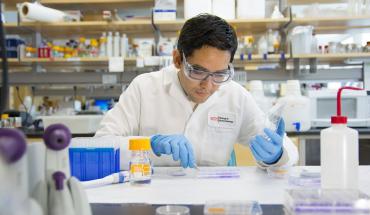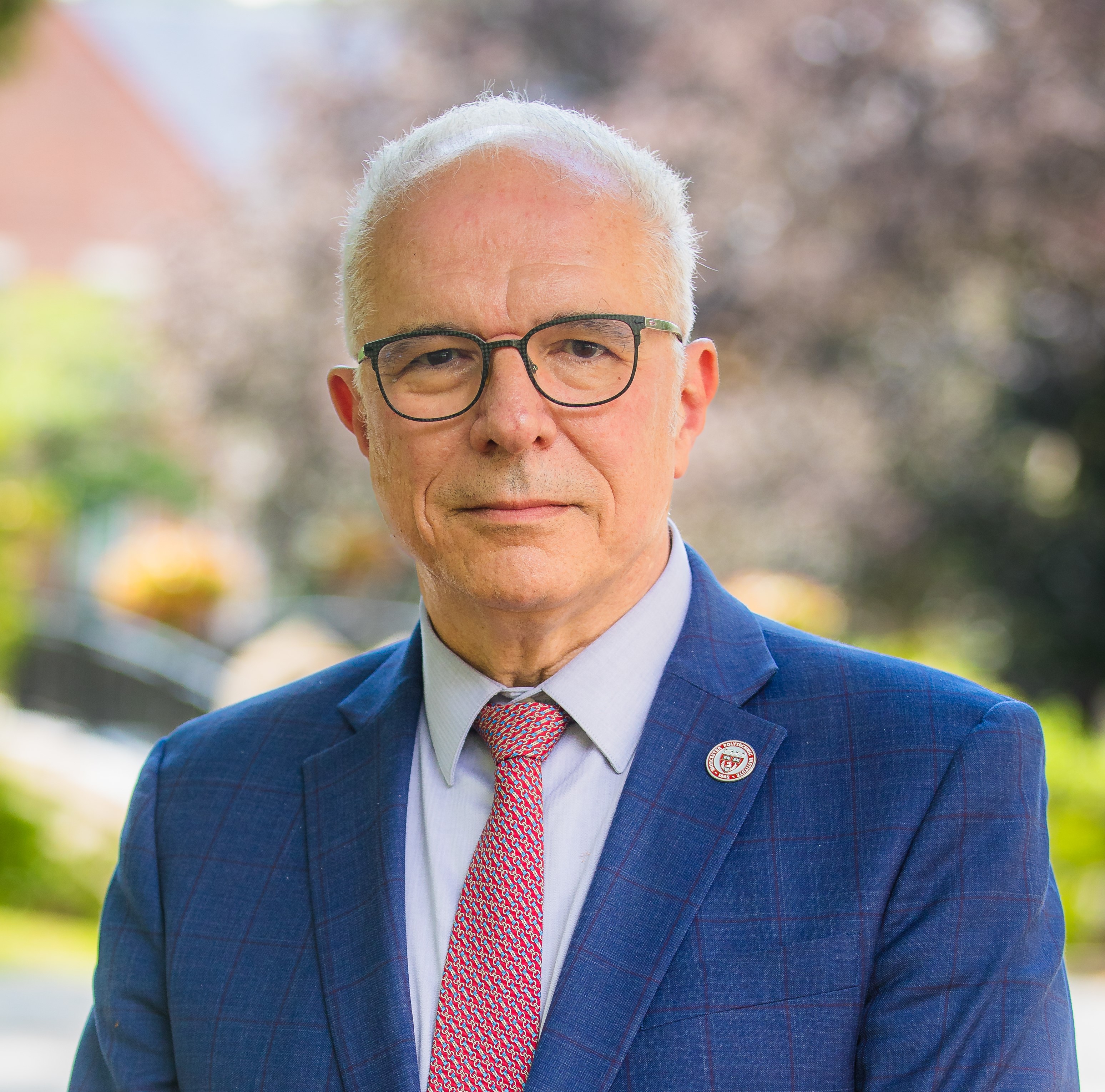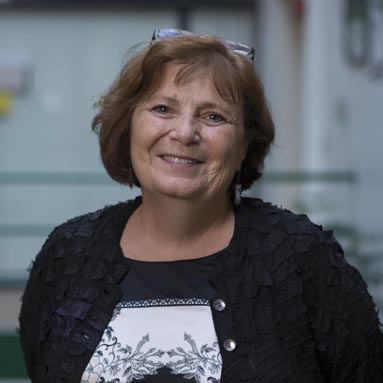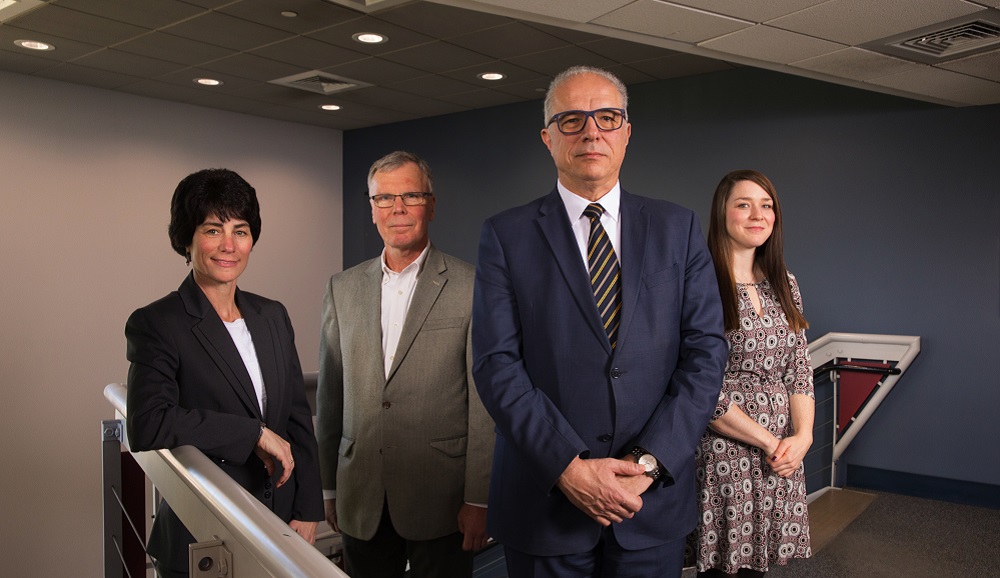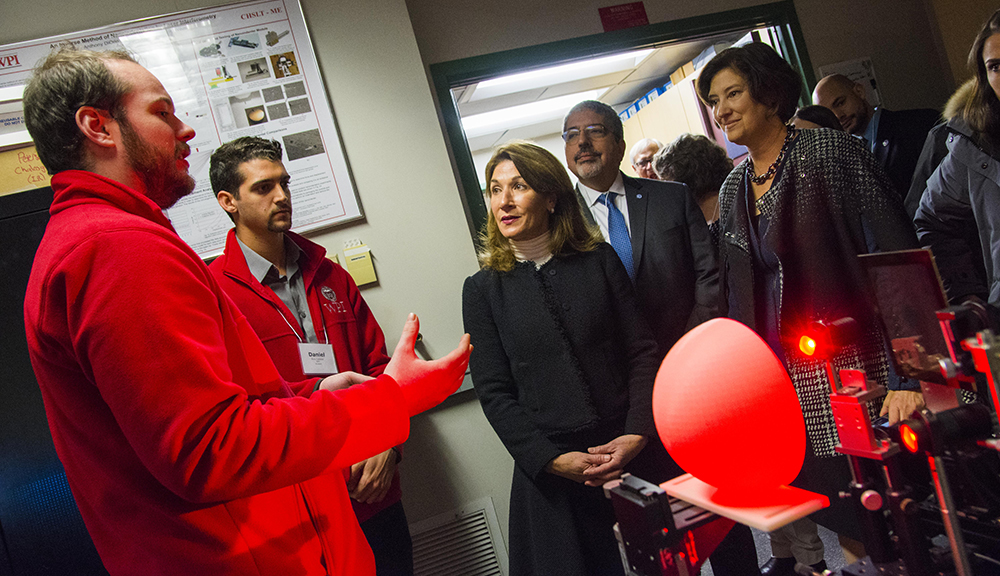WPI research is already cited and recognized around the globe, and the administration has laid the groundwork to increase funding, elevate the research infrastructure, and form strategic partnerships with the aim of stimulating more large multi-disciplinary, multi-institutional proposals, and to embark on new, impactful research.
A significant step has been the development of partnerships with UMass Medical School, where WPI has joint research proposals and undergraduate students doing projects. Vice provost of research Bogdan Vernescu says WPI is in the process of putting together a joint graduate program “that would help us bring well-qualified students to the interface between medical research and engineering, data science, cybersecurity, and statistics.
“The interesting research is going on at the interface of sciences. We need them [UMass Medical], and they need us. The partnerships here are very interesting for us and for them.”
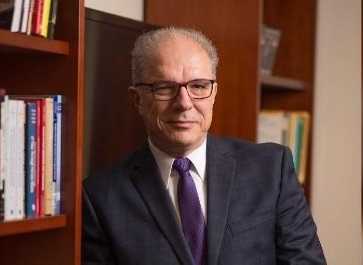
Bogdan Vernescu
“We’re doing something pretty cool with UMass Medical School,” adds Karen Kashmanian Oates, dean of arts and sciences. "They get most of their funding from the National Institutes of Health (NIH). We get only a small amount through NIH, but we do get much of our funding from the National Science Foundation (NSF). This partnership between the schools is really a very opportunistic kind of relationship in which we’re learning from each other how to be successful in securing those kinds of awards.”
Vernescu and Oates are the implementation leads for the Research Enterprise initiative of Elevate Impact: A Strategic Plan for WPI. That initiative aims to enable more critically important research where WPI can have impact.
Research funding has doubled in the last five years, and Vernescu would like that trend to continue. Oates says the university is looking for new funding sources, such as foundations. "We are being very strategic about the submissions of our proposals to federal agencies and, with the help of the foundation Office of Advancement, we are aggressively exploring areas of mutual interest with independent foundations,” she says. “At the same time the institution is supporting faculty members in their quest to acquire prestigious CAREER awards. This year they have been very successful—several have received this five-year award."
In ramping up the research enterprise, the university is putting things in place to help researchers manage, fund, and find partners for their work. Part of that infrastructure upgrade involves strengthening the Office of Sponsored Programs, providing InfoEd (an electronic research administration platform that provides a more efficient way to submit and track proposals), and subscribing to SciVal (a database that provides access to the research performance of 7,500 research institutions in 220 nations worldwide).
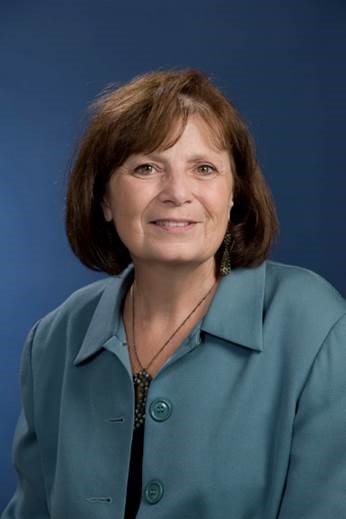
Karen Kashmanian Oates
“In trying to understand where our strengths and weaknesses are, we’re looking at how well our research is doing with our peers,” Vernescu says. “We are actually doing well in terms of impact in the research we’re doing—how many people are using and citing our research—not just in terms of dollars.”
But the most important support component will come this spring with the launch of the Research Solutions Institute, described as a “research structure that will be able to respond to identified needs and opportunities, which will assemble multidisciplinary faculty research clusters from across the university to support the development of the strategic research initiatives and respond to immediate needs of scientific and engineering importance,” with ability to engage in translational activities with industry.
“In a nutshell, we’re trying to support the faculty for these large [research] initiatives. In each of the areas of research, we want to have research development program managers,” Vernescu says. “We’re going to hire a couple this year, and we’ll expand it from there. These will be people who will be able to come up with important funding sources, put together partnerships and companies, and help faculty with multi-entity proposals.
“Faculty members are good at doing that, but they need support. It can get messy and complicated, and we’re trying to help them with that.”
To help steer the direction of research, the Research Council, which was established in the 1980s and disbanded due to budget reasons in the early 2000s, will be re-established. Funding proposals will reviewed to determine which should go forward, Oates says. “They should be looked at on the merits to see if something should go forward. You’ll have five faculty who want to submit a grant. Someone has to decide who moves forward and who doesn’t. It used to be Professor David Cyganski, Bogdan, and myself,” she says. “We need a consult to help. It can’t be just a few people. It has to be a collective decision.”
It is an important group to steer the direction of research and proposals, and submissions for limited competition proposals, adds Vernescu. “Getting the wisdom of the best and brightest researchers at WPI is an opportunity we shouldn’t pass up.”
And rounding out efforts to foster research and innovation is the recent membership in two relevant organizations, the National Academy of Inventors (NAI) and the Council for Undergraduate Research (CUR).
"We’re trying to support the faculty for these large [research] initiatives...we want to have research development program managers. These will be people who will be able to come up with important funding sources, put together partnerships and companies, and help faculty with multi-entity proposals."
-Bogdan Vernescu
WPI established an NAI chapter with the intention of developing an innovative and entrepreneurial mindset, and to recognize the successes of colleagues, faculty, and students who submit patents and are innovators, Vernescu says. Among the 46 license and patent disclosures in the past fiscal year, 14 came out of MQPs, with that number having steadily increased in recent years.
“If you think about it, WPI students do research all the time,” Oates points out. “There are those who take the Great Problems Seminar in their freshman year, and in their second year they can do an HUA project. Then, they go on to do these tremendous IQPs and MQPs.
“CUR is a national organization. To me that is a big deal, because what it says to me is we’re not going to keep this a secret. The fact is that our students are doing research from day one, and not just within our little community. Some go to Washington, and present posters on Capitol Hill.”
- By Martin Luttrell
